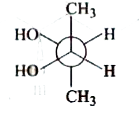In which of the following molecule. The internuclear distance will be maximum :
CsI
CsF
LiF
LiI
The correct Answer is:A
To determine which molecule has the maximum internuclear distance among the given options (CsI, CsF, LiF, and LiI), we need to analyze the sizes of the cations and anions involved in each compound.
1. Identify the Cations and Anions:
- CsI: Cation = Cs⁺ (Cesium), Anion = I⁻ (Iodine)
- CsF: Cation = Cs⁺ (Cesium), Anion = F⁻ (Fluoride)
- LiF: Cation = Li⁺ (Lithium), Anion = F⁻ (Fluoride)
- LiI: Cation = Li⁺ (Lithium), Anion = I⁻ (Iodine)
2. Determine the Sizes of the Ions:
- Cs⁺ is a large cation.
- I⁻ is a large anion.
- F⁻ is a small anion.
- Li⁺ is a small cation.
3. Analyze the Size Combinations:
- In CsI, both Cs⁺ and I⁻ are large, leading to a larger internuclear distance.
- In CsF, Cs⁺ is large but F⁻ is small, resulting in a smaller internuclear distance compared to CsI.
- In LiF, both Li⁺ and F⁻ are small, leading to a smaller internuclear distance.
- In LiI, Li⁺ is small but I⁻ is large, resulting in a smaller internuclear distance than CsI but larger than LiF.
4. Conclusion:
- The internuclear distance will be maximum in CsI because both the cation (Cs⁺) and anion (I⁻) are large in size.
Final Answer:
The molecule with the maximum internuclear distance is CsI (Cesium Iodide).
- CsI: Cation = Cs⁺ (Cesium), Anion = I⁻ (Iodine)
- CsF: Cation = Cs⁺ (Cesium), Anion = F⁻ (Fluoride)
- LiF: Cation = Li⁺ (Lithium), Anion = F⁻ (Fluoride)
- LiI: Cation = Li⁺ (Lithium), Anion = I⁻ (Iodine)
- Cs⁺ is a large cation.
- I⁻ is a large anion.
- F⁻ is a small anion.
- Li⁺ is a small cation.
- In CsI, both Cs⁺ and I⁻ are large, leading to a larger internuclear distance.
- In CsF, Cs⁺ is large but F⁻ is small, resulting in a smaller internuclear distance compared to CsI.
- In LiF, both Li⁺ and F⁻ are small, leading to a smaller internuclear distance.
- In LiI, Li⁺ is small but I⁻ is large, resulting in a smaller internuclear distance than CsI but larger than LiF.
- The internuclear distance will be maximum in CsI because both the cation (Cs⁺) and anion (I⁻) are large in size.
The molecule with the maximum internuclear distance is CsI (Cesium Iodide).
Similar Questions
Knowledge Check
Which of the following molecules are chiral?
A B
B C
C D
D
Which of the following molecules is not linear?
AO=C=C=C=OBH2C=C=OCHC≡C−C≡CHDHC≡CHWhich of the following dienes is chiral?
ACH3−CH2=C=CH2BCH3−CH=CH−CH=CH2CCH3CH=C=CHCH3DCH2=CH−CH2−CH=CH2



